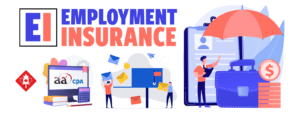Author Archives: Advanced Tax
Personal Service Businesses & Tax Rules
Rules on Taxes for Personal Service Businesses As a sole proprietor, regardless of your incorporation,[Read More]
15
Nov
Nov
Information on CPP: Canada Pension Plan
How the Canada Pension Plan Works The Canada Pension Plan or CPP is a retirement[Read More]
06
Nov
Nov
Canadian Employment Insurance or EI
Eligibility & the Process for Employment Insurance Employment Insurance or EI in Canada is a[Read More]
27
Oct
Oct
Bookkeeping vs Accounting in Business
Bookkeeping vs Accounting & Your Business What is the difference in bookkeeping vs accounting? When[Read More]
20
Oct
Oct
Canadian Maternity and Parental Benefits
How Maternity and Parental Benefits Work In Canada, maternity and parental benefits are processed through[Read More]
09
Oct
Oct





